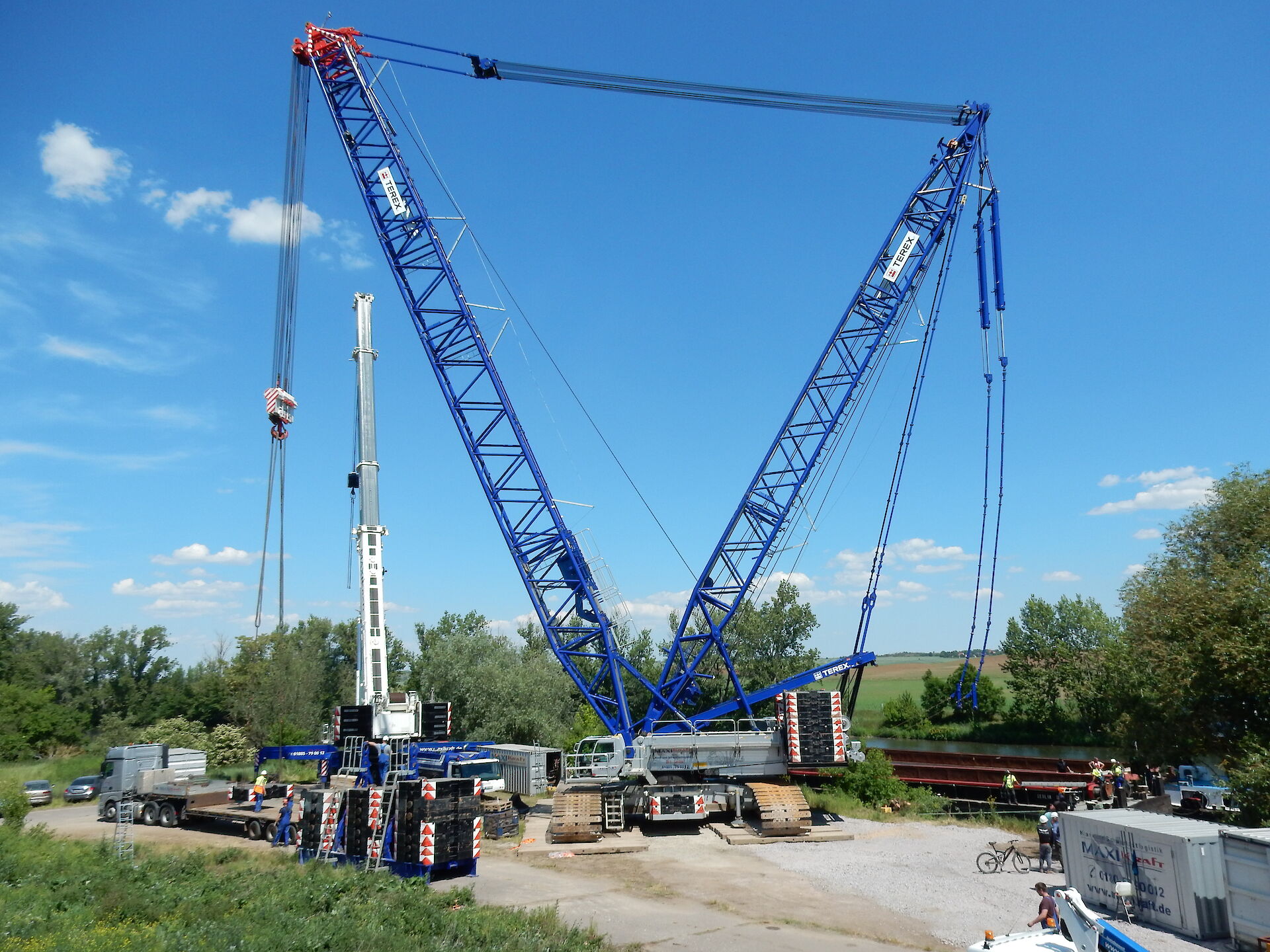27 Jun 2019 16:12
Hinterland
Between Ascension Day and Pentecost, an extraordinary cargo could be seen being shipped along the rivers Saale und Elbe. A total of eight lighters were loaded with chemical plant sections at Pfütztal on the Saale and shifted by four low-draft push-tugs via the Elbe on to Hamburg. Along with smaller parts, the shipment included ten large sections, each up to 50 metres long, 8.30 metres wide and weighing almost 270 tons.
The preliminaries already confronted the project forwarder with immense challenges. As Hüseyin Kizilagac, Managing Director of Epi Logistics Hamburg explained: “For transport by land from Leuna Chemical Park to the transhipment point Pfütztal we had to build or upgrade almost six kilometres of road, including a 170-metre bridge.” Planning plus securing permissions took over two years, while several million euros were needed to compensate for the lack of infrastructure. Normally, the biggest problems would have been solved with the transfer on to the inland waterway craft. “Extremely poor fairway conditions on both the Saale and the Elbe caused serious restrictions on our choice of vessels and time windows,” continued Kizilagac. Although the Saale is very largely regulated by barrages, that does not apply between Calbe and the entry into the Elbe. There the river is free-flowing and therefore highly dependent on precipitation. The weather in recent weeks has caused low water levels on both the Elbe and the Saale.
With Deutsche Binnenreederei, a shipping company was found that was capable of providing both the appropriate equipment and experienced personnel for handling this shipment. David Schütz, Project Manager for DBR, explained: “Apart from the low water situation, the non-regulated part of the Saale between Calbe and where it meets the Elbe was a real challenge. At low water, narrow-radius curves as far as the first lock on the Saale demanded maximum concentration.” The dimensions of separate sections with diameters of up to 8.30 metres also called for precise observation whilst passing bridges and locks.
Thanks to the strong commitment of all those involved, all sections arrived punctually in Hamburg and are ready to be loaded for China, where the plant will be re-assembled before entering service.
Transport would have been considerably simpler had the planned Saale Lateral Canal been realized. This would avoid the bottleneck on the Saale. This canal is on the list of priorities for the Elbe Allianz, which champions shipping and ports in the Elbe region. “Despite inclusion in the additional requirements of the current Federal Transport Routes Plan, this measure is still under the radar,” regrets Karina Fischer, the Saale representative in the Elbe Allianz and in her main job responsible for handling orders at the only shipyard on the Saale. “The Saale Lateral Canal and the implementation of the Masterplan Elbe would massively improve economic conditions for the entire region and boost the most ecologically compatible carrier,” emphasizes Fischer. She also points out that apart from special shipments of this kind, the Saale also offers potential for ‘normal’ cargoes. In Nienburg, Bernburg, Alsleben and Halle, for example, there are many companies that would happily handle part of their transport requirements by water, using ecological inland waterway craft.

